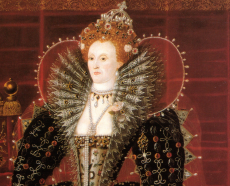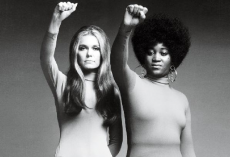
Email: stella@papersnail.co.uk
Total Article : 28
About Me:Sixth form student studying Politics, Biology and Psychology. I'm interested in a range of topics such as music, current affairs, women's issues and world politics.

Feminism shows its roots as early as the reign of Queen Elizabeth the First of the 1500s, Mary Wollstonecraft of the 1700s or Jane Austen during the early 1800s. These women advocated and showed dignity, intelligence and the best potential of the female sex. However, only in the late 1800s was it that a solid, self-conscious and clearly identifiable movement was formed to represent and fight for women’s rights; feminism.
The first wave of feminism emerged during the turn of the 20th century, rising from the backdrop of industrialism, urbanisation and basic liberal politics. The first feminist movement focused greatly on formal, legal equality – first wave feminists carried out the fight for the vote for women. First wave feminism was characterised by predominantly white, middle class, and almost entirely cisgender women and encouraged the review of the basic differences between men and women. First wave feminism is sometimes criticised for being elitist and having a ‘pull the ladder up behind you’ mentality when it came to the inclusion of black women or women of other ethnicities, and also working class women. First wave feminism also failed to address the social causes of gender inequality, and attempted to fix cultural inequality by legal means.

The recognition of the inadequacy of legal equality set off the mutation into the second wave. The second wave is agreed to have existed from the 1960s through into the 1990s. The backdrop of the second wave was anti-war movements, civil rights activism, and the growing consciousness of minority groups in oppressive societies. In Britain, a radical revamp of the Left took place – manifesting itself under New Labour, in the face of this, second wave feminism was seen to be accelerating rapidly down a radical trajectory. For second wave feminists, social inequality was the key issue – focusing on female sexuality and reproductive rights for women. We have second wave feminists to thank for the bra-burning stereotype of feminists – as emphasis was put on feminine items such as high-heels, lipstick and bras as a means of patriarchal oppression of women. Second wave feminists began to realise the association of the oppression of women with more wide spanning social critiques of capitalism, normative heterosexuality and the class divide. To address the exclusionary nature of first wave feminism, second wave feminism attracted with women of colour, women from developing nations and working class women in order to seek sisterhood, describing women as a social class and throwing phrases such as “the personal is the political” into the public domain.
Image Credits: http://www.rmg.co.uk/discover/explore/queen-elizabeth-I
http://www.thefrisky.com/2015-10-09/does-feminism-need-to-get-over-the-wave-thing/

0 Comment:
Be the first one to comment on this article.